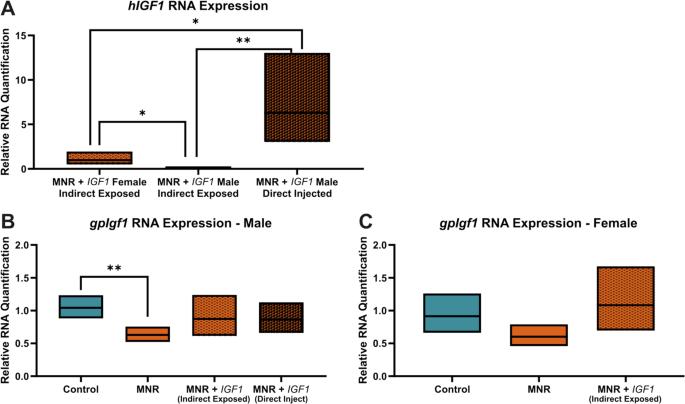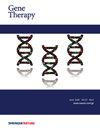Placental nanoparticle-mediated IGF1 gene therapy corrects fetal growth restriction in a guinea pig model
IF 4.5
3区 医学
Q1 BIOCHEMISTRY & MOLECULAR BIOLOGY
引用次数: 0
Abstract
Fetal growth restriction (FGR) caused by placental insufficiency is a major contributor to neonatal morbidity and mortality. There is currently no in utero treatment for placental insufficiency or FGR. The placenta serves as the vital communication, supply, exchange, and defense organ for the developing fetus and offers an excellent opportunity for therapeutic interventions. Here we show efficacy of repeated treatments of trophoblast-specific human insulin-like 1 growth factor (IGF1) gene therapy delivered in a non-viral, polymer nanoparticle to the placenta for the treatment of FGR. Using a guinea pig maternal nutrient restriction model (70% food intake) of FGR, nanoparticle-mediated IGF1 treatment was delivered to the placenta via ultrasound guidance across the second half of pregnancy, after establishment of FGR. This treatment resulted in correction of fetal weight in MNR + IGF1 animals compared to sham treated controls on an ad libitum diet, increased fetal blood glucose and decreased fetal blood cortisol levels compared to sham treated MNR, and showed no negative maternal side-effects. Overall, we show a therapy capable of positively impacting the entire pregnancy environment: maternal, placental, and fetal. This combined with our previous studies using this therapy at mid pregnancy in the guinea pig and in two different mouse model and three different human in vitro/ex vivo models, demonstrate the plausibility of this therapy for future human translation. Our overall goal is to improve health outcomes of neonates and decrease numerous morbidities associated with the developmental origins of disease.

胎盘纳米颗粒介导的IGF1基因治疗在豚鼠模型中纠正胎儿生长限制。
胎盘功能不全引起的胎儿生长受限(FGR)是新生儿发病率和死亡率的主要原因。目前尚无子宫内治疗胎盘功能不全或FGR的方法。胎盘是胎儿发育过程中至关重要的沟通、供应、交换和防御器官,为治疗干预提供了极好的机会。在这里,我们展示了滋养层细胞特异性人胰岛素样1生长因子(IGF1)基因疗法在非病毒聚合物纳米颗粒中传递到胎盘中治疗FGR的效果。采用FGR母鼠营养限制模型(70%的食物摄入量),在FGR建立后的妊娠后半段,通过超声引导将纳米颗粒介导的IGF1治疗递送到胎盘。与随意饮食的假对照组相比,这种治疗导致MNR + IGF1动物的胎儿体重得到纠正,与假处理的MNR相比,胎儿血糖升高,胎儿血液皮质醇水平降低,并且没有显示出负面的母体副作用。总的来说,我们展示了一种能够对整个妊娠环境产生积极影响的疗法:母体、胎盘和胎儿。结合我们之前在妊娠中期的豚鼠、两种不同的小鼠模型和三种不同的人类体外/离体模型中使用这种疗法的研究,证明了这种疗法在未来人类翻译中的可行性。我们的总体目标是改善新生儿的健康状况,减少与疾病发育起源相关的众多发病率。
本文章由计算机程序翻译,如有差异,请以英文原文为准。
求助全文
约1分钟内获得全文
求助全文
来源期刊

Gene Therapy
医学-生化与分子生物学
CiteScore
9.70
自引率
2.00%
发文量
67
审稿时长
4-8 weeks
期刊介绍:
Gene Therapy covers both the research and clinical applications of novel therapeutic techniques based on a genetic component. Over the last few decades, significant advances in technologies ranging from identifying novel genetic targets that cause disease through to clinical studies, which show therapeutic benefit, have elevated this multidisciplinary field to the forefront of modern medicine.
 求助内容:
求助内容: 应助结果提醒方式:
应助结果提醒方式:


